Dual Synthetic Jet Actuator and Its Applications—Part IV: Analysis of Heat Dissipation and Entropy Generation of Liquid Cooling with Dual Synthetic Jet Actuator
Abstract
1. Introduction
2. Numerical Methods
2.1. Physical Model
2.2. Governing Equations
2.3. Boundary Conditions and Numerical Solver Setting
2.4. Numerical Method Validation
2.5. Relevant Definitions
3. Results
3.1. Temperature Field
3.2. Flow Field Characteristics
3.3. Entropy Generation Analysis
3.4. Effect of Diaphragm Frequency
4. Conclusions
- When the DSJ is off, the cooling device observes an asymmetric temperature distribution. The maximum temperature reaches 98.22 °C. When the DSJ is on, the maximum temperature is only 73.07 °C. A 25.60% heat transfer enhancement was achieved. The temperature field of the cooling device changes periodically with the DSJ. The thermal boundary layer attached to the impact surface was periodically destroyed by the DSJ. It is helpful to enhance convection heat transfer.
- When the DSJ is off, the jet deflects under the influence of a flow velocity of 1.5 m/s in the channel. It is difficult to achieve full-impact heat dissipation on the wall. The DSJ on solves this problem. At this time, the DSJ can directly impact the wall and interacts with the incoming flow to enhance mixing. The rich vortex structure is helpful for convection heat transfer.
- The results of entropy generation analysis show that total entropy generation mainly comprises the contribution of thermal entropy generation, and the influence of frictional entropy generation is small. The entropy generation of the DSJ when on is much lower than that of the DSJ when off.
- The optimal frequency results in the best overall performance of the cooling device. This section studies the performance of the cooling device when the diaphragm frequency is 10 Hz, 30 Hz, 40 Hz, and 50 Hz. It is found that the device has the best comprehensive performance when the frequency is 30 Hz.
Author Contributions
Funding
Institutional Review Board Statement
Informed Consent Statement
Data Availability Statement
Conflicts of Interest
References
- Hao, X.H.; Peng, B.; Xie, G.N.; Chen, Y. Efficient on-chip hotspot removal combined solution of thermoelectric cooler and mini-channel heat sink. Appl. Therm. Eng. 2016, 100, 170–178. [Google Scholar] [CrossRef]
- Viswanath, R.; Wakharkar, V.; Watwe, A.; Lebonheur, V. Thermal performance challenges from silicon to systems. Int. Technol. J. 2000, 3, 1–16. [Google Scholar]
- Tuckerman, D.B.; Pease, R.F.W. High-performance heat sinking for VLSI. IEEE Electron Device Lett. 1981, 2, 126–129. [Google Scholar] [CrossRef]
- Zeng, S.; Lee, P.S. Topology optimization of liquid-cooled microchannel heat sinks: An experimental and numerical study. Int. J. Heat Mass Transf. 2019, 142, 118401. [Google Scholar] [CrossRef]
- Zhuang, D.W.; Yang, Y.F.; Ding, G.L.; Du, X.Y.; Hu, Z.T. Optimization of microchannel heat sink with rhombus fractal-like units for electronic chip cooling. Int. J. Refrig. 2020, 116, 108–118. [Google Scholar] [CrossRef]
- Alugoju, U.K.; Dubey, S.K.; Javed, A. Optimization of converging and diverging microchannel heat sink for electronic chip cooling, IEEE Transactions on Com-ponents. Packag. Manuf. Technol. 2020, 10, 817–827. [Google Scholar] [CrossRef]
- Tan, H.; Wu, L.W.; Wang, M.Y.; Yang, Z.H.; Du, P.A. Heat transfer improvement in microchannel heat sink by topology design and optimization for high heat flux chip cooling. Int. J. Heat Mass Transf. 2019, 129, 681–689. [Google Scholar] [CrossRef]
- Wang, R.; Qian, J.Y.; Wei, T.; Huang, H.J. Integrated closed cooling system for high-power chips. Case Stud. Therm. Eng. 2021, 26, 100954. [Google Scholar] [CrossRef]
- Ma, D.D.; Xia, G.D.; Wang, J.; Yang, Y.C.; Jia, Y.T.; Zong, L.X. An experimental study on hydrothermal performance of microchannel heat sinks with 4-ports and offset zigzag channels. Energy Convers. Manag. 2017, 152, 157–165. [Google Scholar] [CrossRef]
- Zhang, J.R.; Zhang, T.T.; Prakash, S.; Jaluria, Y. Experimental and numerical study of transient electronic chip cooling by liquid flow in microchannel heat sinks. Numer. Heat Transf. Part A Appl. 2014, 65, 627–643. [Google Scholar] [CrossRef]
- Xie, G.N.; Liu, J.; Zhang, W.H.; Sunden, B. Analysis of flow and thermal performance of a water-cooled transversal wavy microchannel heat sink for chip cooling. J. Electron. Packag. 2012, 134, 041010. [Google Scholar] [CrossRef]
- Tseng, P.H.; Tsai, K.T.; Chen, A.L.; Wang, C.C. Performance of novel liquid-cooled porous heat sink via 3-D laser additive manufacturing. Int. J. Heat Mass Transf. 2019, 137, 558–564. [Google Scholar] [CrossRef]
- Chiu, H.C.; Jang, J.H.; Yeh, H.W.; Wu, M.S. The heat transfer characteristics of liquid cooling heatsink containing microchannels. Int. J. Heat Mass Transf. 2011, 54, 34–42. [Google Scholar] [CrossRef]
- Robinson, A.J. A thermal–hydraulic comparison of liquid microchannel and impinging liquid jet array heat sinks for high-power electronics cooling. IEEE Trans. Compon. Packag. Technol. 2009, 32, 347–357. [Google Scholar] [CrossRef]
- Smith, B.L.; Glezer, A. The formation and evolution of synthetic jets. Phys. Fluids 1998, 10, 2281–2297. [Google Scholar] [CrossRef]
- van Buren, T.; Whalen, E.; Amitay, M. Vortex formation of a finite-span synthetic jet: Effect of rectangular orifice geometry. J. Fluid Mech. 2014, 745, 180–207. [Google Scholar] [CrossRef]
- Bazdidi-Tehrani, F.; Eghbali, A.; Karami, M. Influence of jet-to-surface distance and frequency on unsteady heat transfer and mass flowrates in an impingement synthetic jet. J. Enhanc. Heat Transf. 2013, 20, 115–136. [Google Scholar] [CrossRef]
- Zhang, J.Z.; Tan, X.M. Experimental study on flow and heat transfer characteristics of synthetic jet driven by piezoelectric actuator. Sci. China Ser. E Technol. Sci. 2007, 50, 221–229. [Google Scholar] [CrossRef]
- Jagannatha, D.; Narayanaswamy, R.; Chandratilleke, T.T. Analysis of a synthetic jet-based electronic cooling module. Numer. Heat Transf. Part A Appl. 2009, 56, 211–229. [Google Scholar] [CrossRef]
- Luo, Z.B.; Xia, Z.X.; Liu, B. New Generation of Synthetic Jet Actuators. AIAA J. 2006, 44, 2418–2419. [Google Scholar] [CrossRef]
- Luo, Z.B.; Zhao, Z.J.; Deng, X.; Wang, L.; Xia, Z.X. Dual Synthetic Jets Actuator and Its Applications—Part I: PIV Measurements and Comparison to Synthetic Jet Actuator. Actuators 2022, 11, 205. [Google Scholar] [CrossRef]
- Deng, X.; Luo, Z.B.; Xia, Z.X.; Gong, W.J. Experimental investigation on the flow regime and impingement heat transfer of dual synthetic jet. Int. J. Therm. Sci. 2019, 145, 105864. [Google Scholar] [CrossRef]
- Jagannatha, D.; Chandratilleke, T.T.; Narayanaswamy, R. Interactive flow behaviour and heat transfer enhancement in a microchannel with cross flow synthetic jet. Int. J. Emerg. Multidiscip. Fluid Sci. 2010, 2, 27–43. [Google Scholar] [CrossRef][Green Version]
- Lee, A.; Yeoh, G.H.; Timchenko, V.; Reizes, J. Numerical computation and investigation of the characteristics of microscale synthetic jets. Model. Simul. Eng. 2011, 2011, 12. [Google Scholar] [CrossRef]
- Pokharel, P. Convective Heat Transfer Enhancement of a Channel-Flow Using Synthetic Jet. Doctoral Dissertation, The University of Mississippi, Oxford, MS, USA, May 2021. [Google Scholar]
- Lee, A.; Yeoh, G.H.; Timchenko, V.; Reizes, J.A. Heat transfer enhancement in micro-channel with multiple synthetic jets. Appl. Therm. Eng. 2012, 48, 275–288. [Google Scholar] [CrossRef]
- Lau, G.E.; Mohammadpour, J.; Lee, A. Cooling performance of an impinging synthetic jet in a microchannel with nanofluids: An Eulerian approach. Appl. Therm. Eng. 2021, 188, 116624. [Google Scholar] [CrossRef]
- Qiu, Y.L.; Hu, W.J.; Wu, C.J.; Chen, W.F. Flow and heat transfer characteristics in a microchannel with a circular synthetic jet. Int. J. Therm. Sci. 2021, 164, 106911. [Google Scholar] [CrossRef]
- Giachetti, B.; Fénot, M.; Couton, D.; Plourde, F. Influence of Reynolds number synthetic jet dynamic in crossflow configuration on heat transfer enhancement. Int. J. Heat Mass Transf. 2018, 118, 1–13. [Google Scholar] [CrossRef]
- Fang, R.X.; Khan, J.A. Active heat transfer enhancement in single-phase microchannels by using synthetic jets. J. Therm. Sci. Eng. Appl. 2013, 5, 011006. [Google Scholar] [CrossRef]
- Mohammadpour, J.; Salehi, F.; Lee, A.; Brandt, L. Nanofluid heat transfer in a microchannel heat sink with multiple synthetic jets and protrusions. Int. J. Therm. Sci. 2022, 179, 107642. [Google Scholar] [CrossRef]
- Mohammadpour, J.; Salehi, F.; Lee, A. Performance of nano encapsulated phase change material slurry heat transfer in a microchannel heat sink with dual-circular synthetic jets. Int. J. Heat Mass Transf. 2022, 184, 122265. [Google Scholar] [CrossRef]
- Peng, L.; Luo, Z.B.; Deng, X.; Yang, S.K. Experimental investigation on characteristics of flow field and propulsion of dual synthetic jets in water. Acta Aerodyn. Sin. 2017, 35, 290–298. [Google Scholar]
- Ikhlaq, M.; Yasir, M.; Demiroğlu, M.; Arik, M. Synthetic Jet Cooling Technology for Electronics Thermal Management—A Critical Review. IEEE Transactions on Components. Packag. Manuf. Technol. 2021, 11, 1156–1170. [Google Scholar] [CrossRef]
- Paniagua-Guerra, L.E.; Ramos-Alvarado, B. Efficient hybrid microjet liquid cooled heat sinks made of photopolymer resin: Thermo-fluid characteristics and entropy generation analysis. Int. J. Heat Mass Transf. 2020, 146, 118844. [Google Scholar] [CrossRef]
- Bahiraei, M.; Heshmatian, S.; Keshavarzi, M. A decision-making based method to optimize energy efficiency of ecofriendly nanofluid flow inside a new heat sink enhanced with flow distributor. Powder Technol. 2019, 342, 85–98. [Google Scholar] [CrossRef]
- Mahian, O.; Kianifar, A.; Kleinstreuer, C.; Al-Nimr, M.A.; Pop, I.; Ahmet, Z.; Wongwises, S.S. A review of entropy generation in nanofluid flow. Int. J. Heat Mass Transf. 2013, 65, 514–532. [Google Scholar] [CrossRef]
- Kang, Y.; Luo, Z.B.; Deng, X.; Cheng, P.; Peng, C.; He, W.; Xia, Z.X. Numerical study of a liquid cooling device based on dual synthetic jets actuator. Appl. Therm. Eng. 2023, 219, 119691. [Google Scholar] [CrossRef]
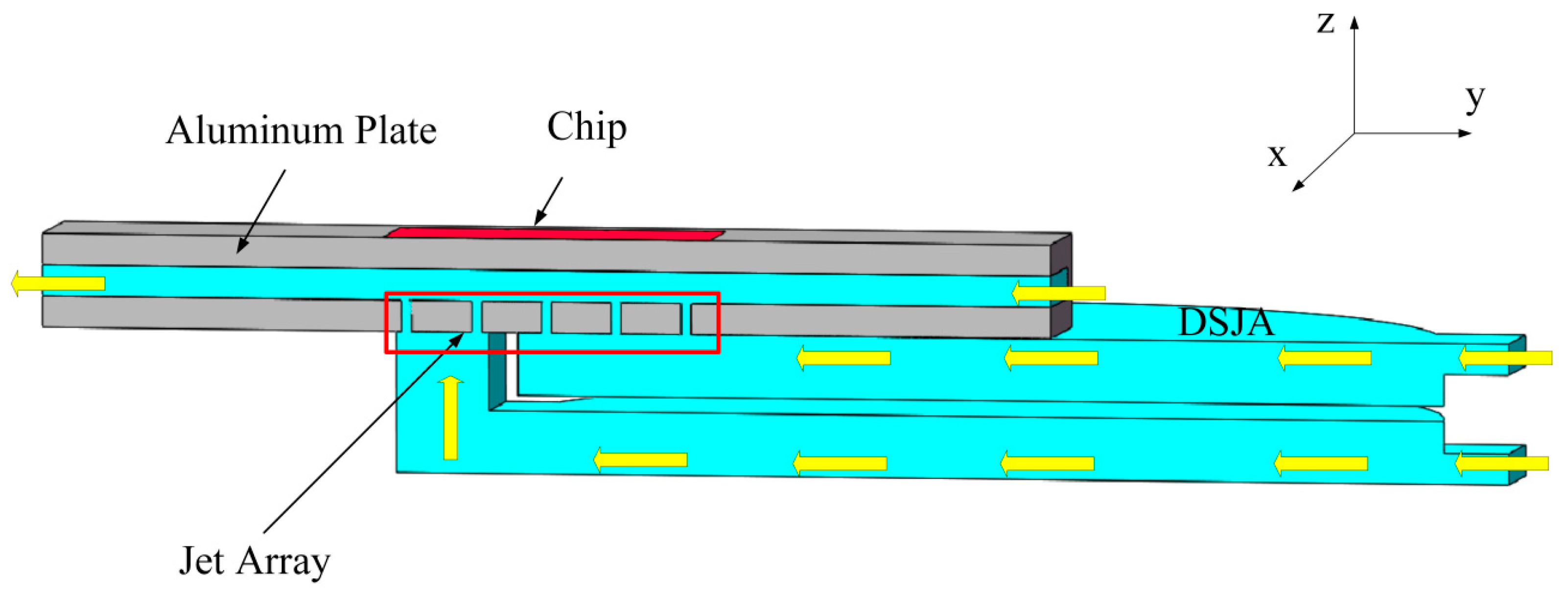
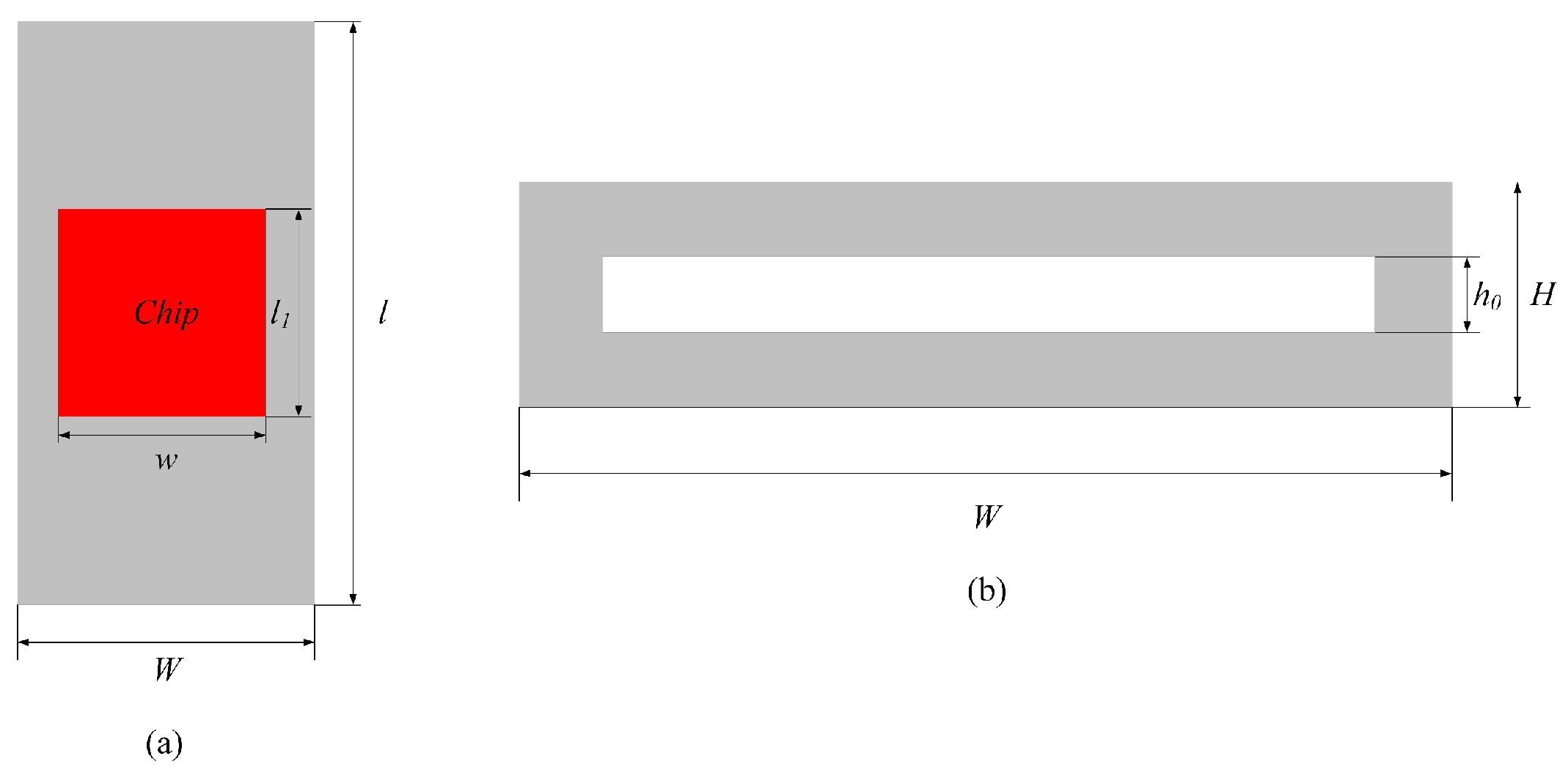
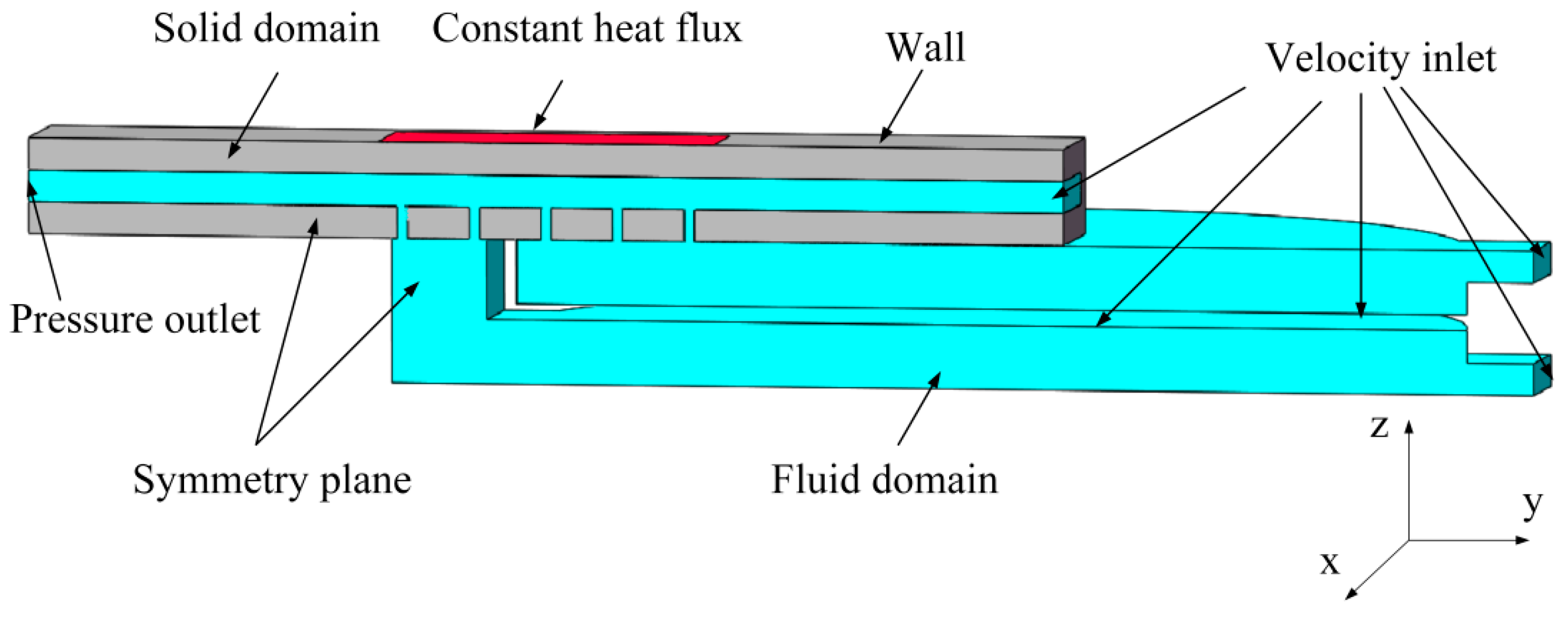
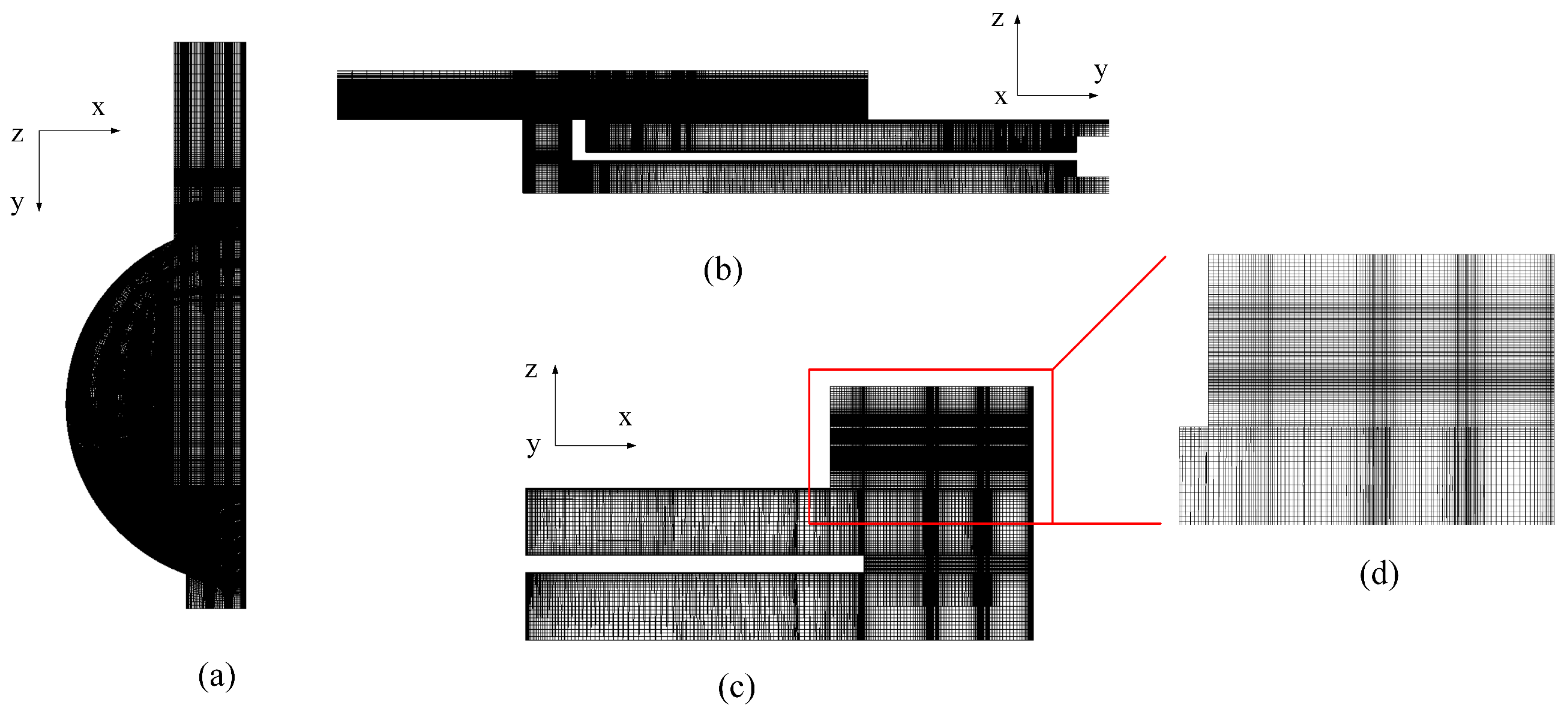

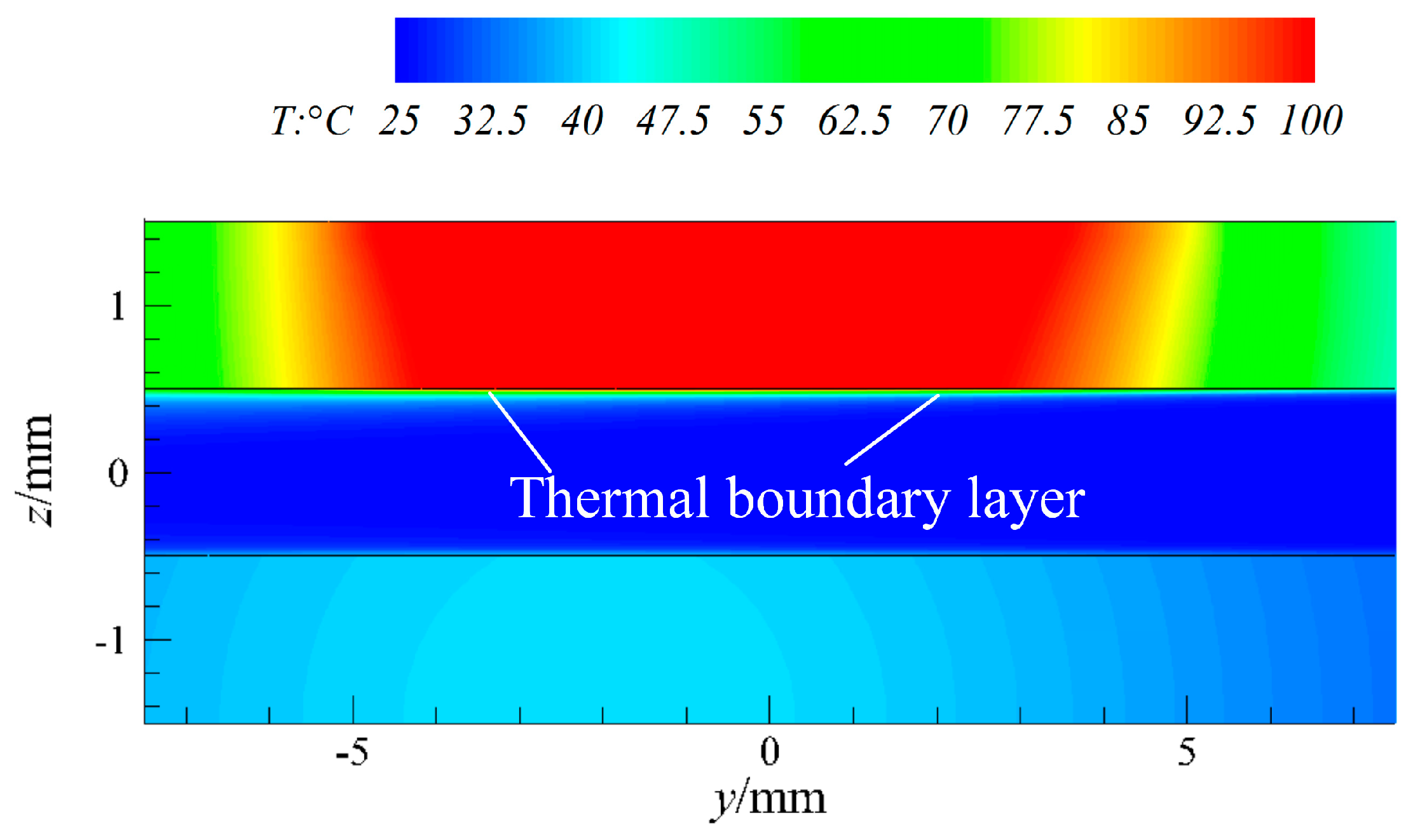
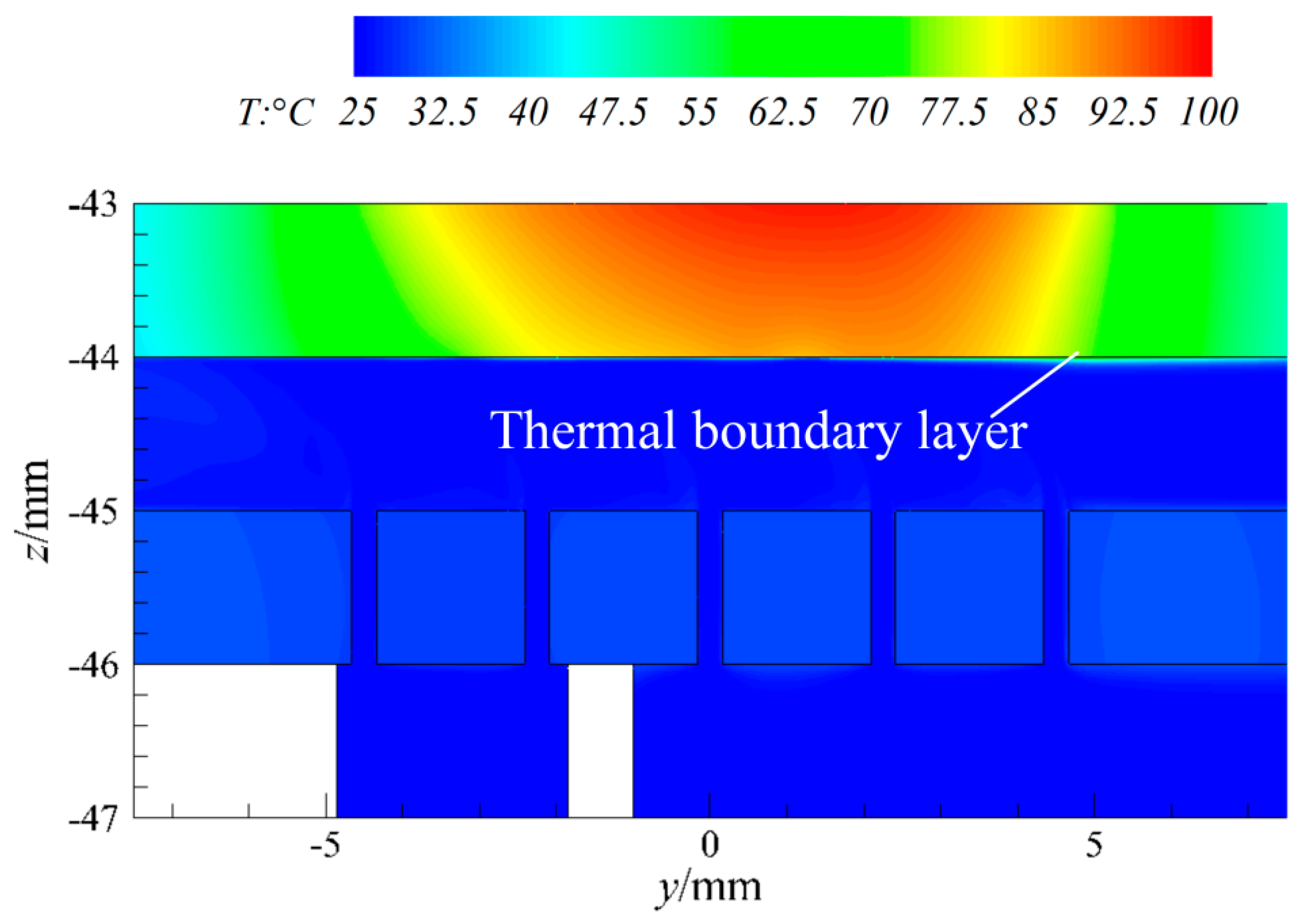
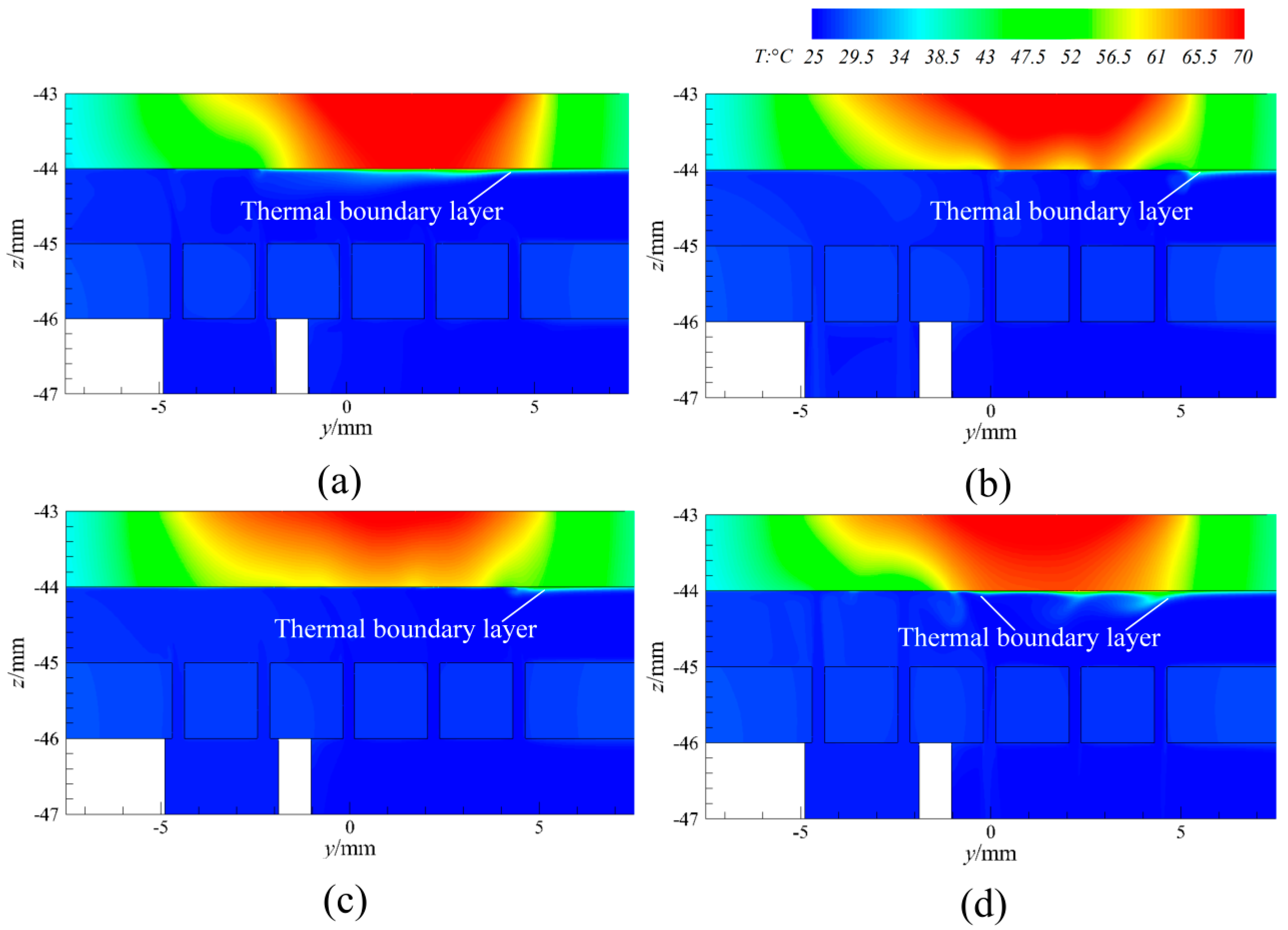
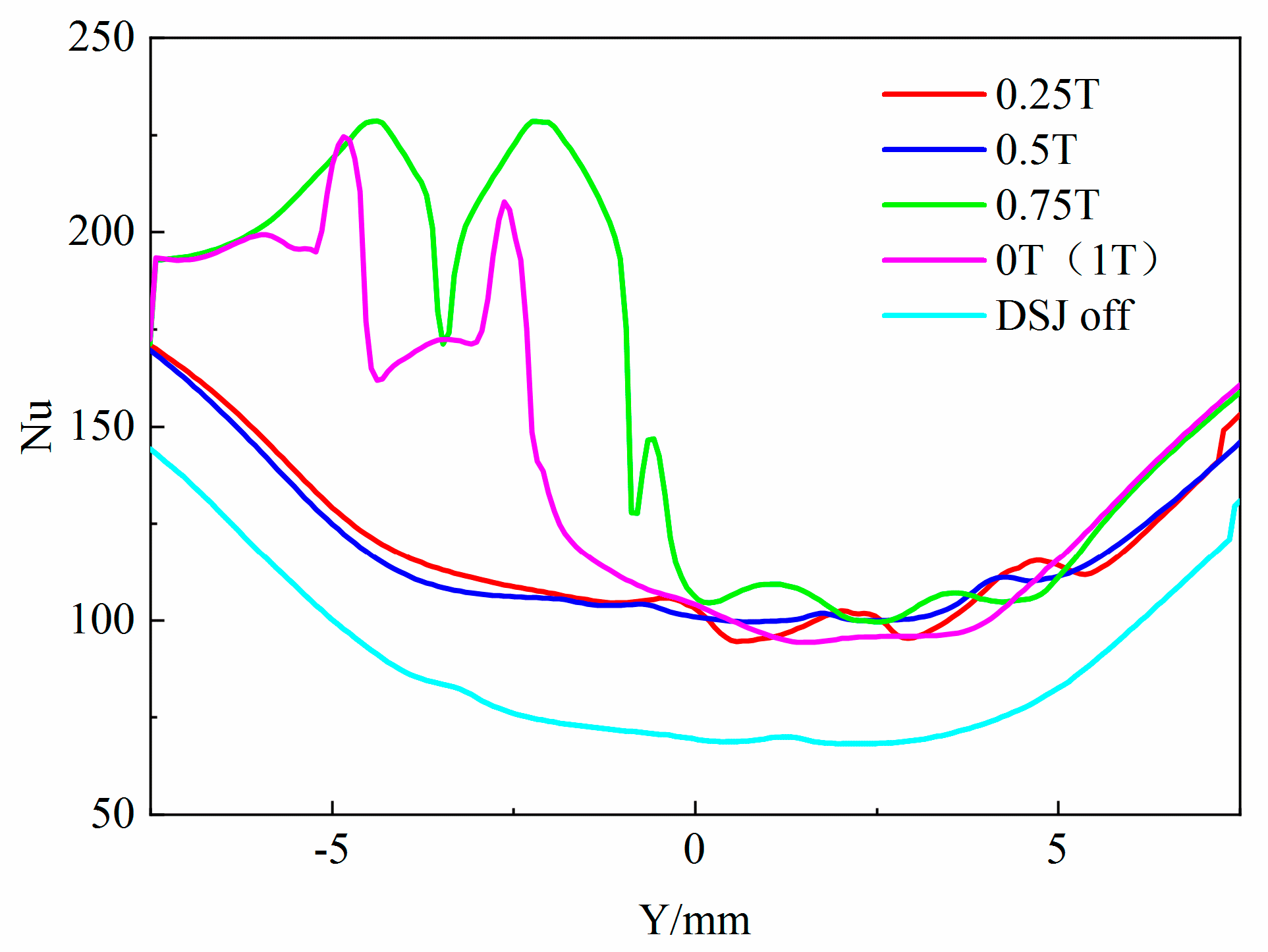


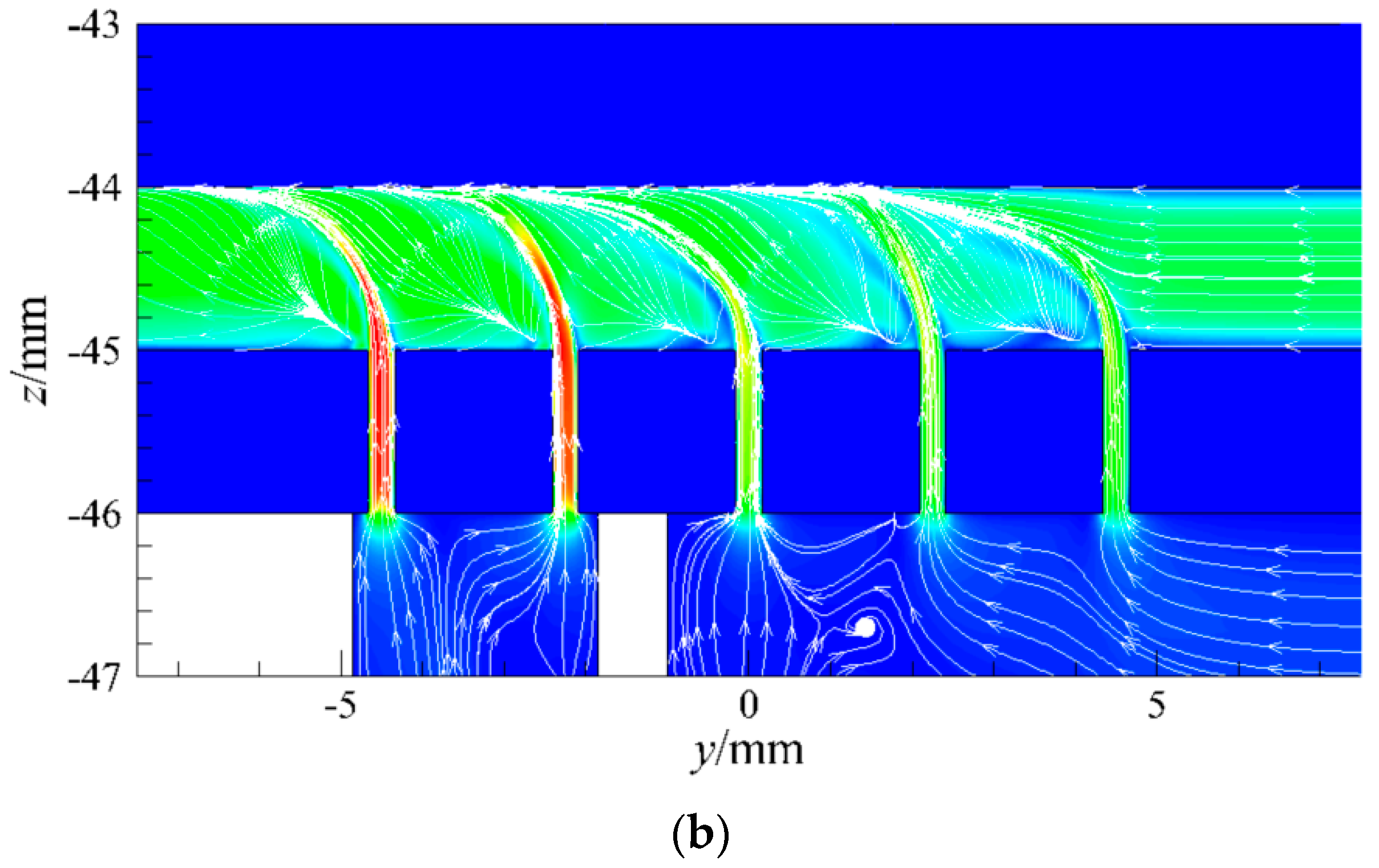
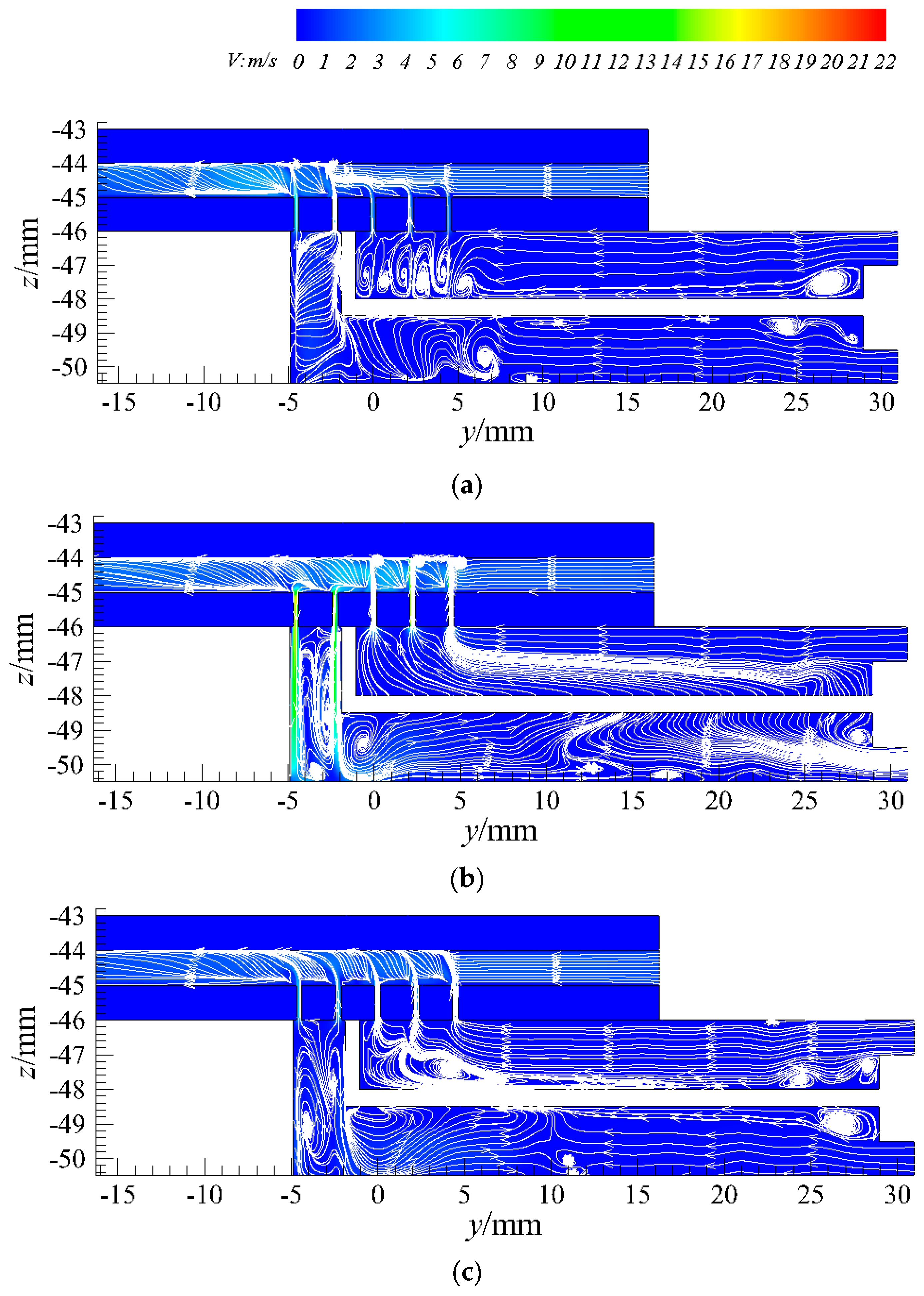
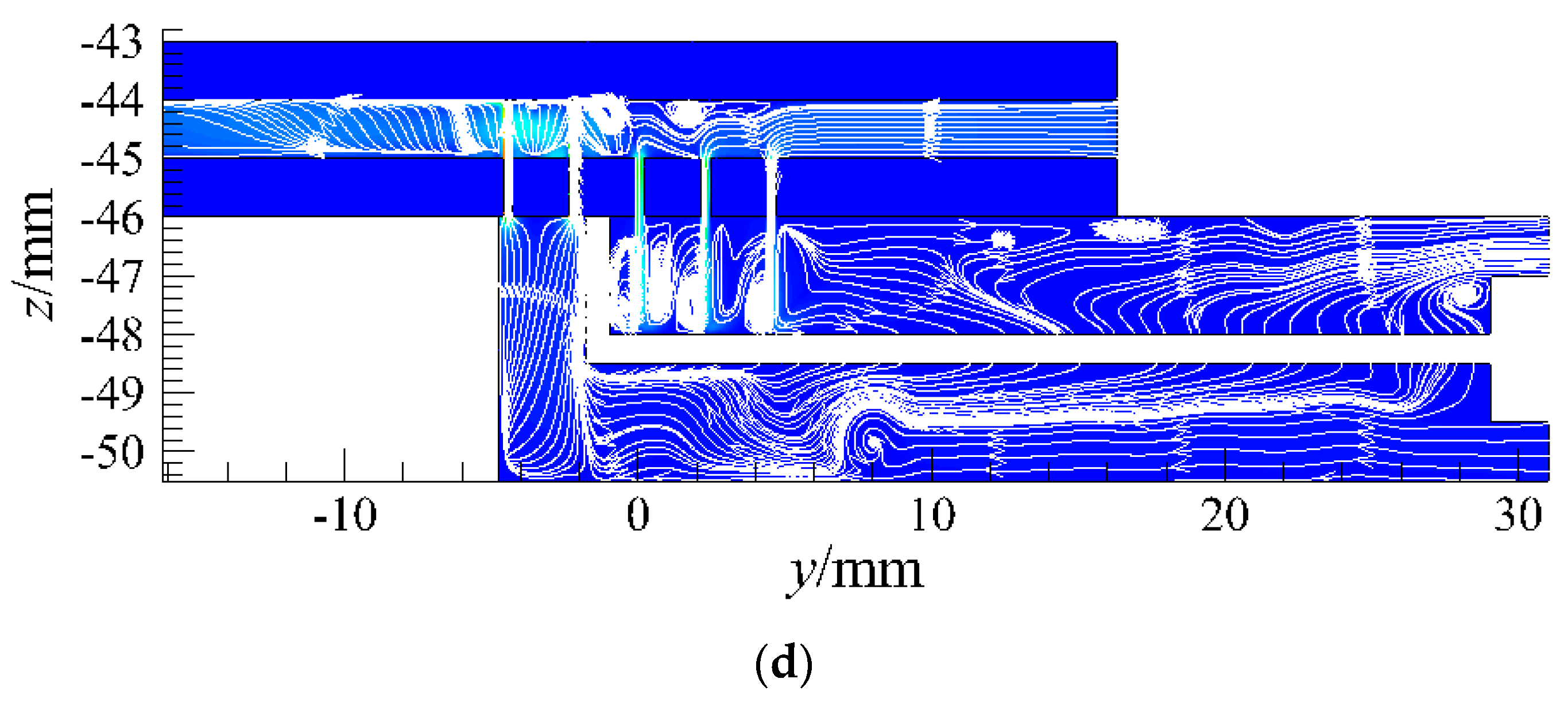


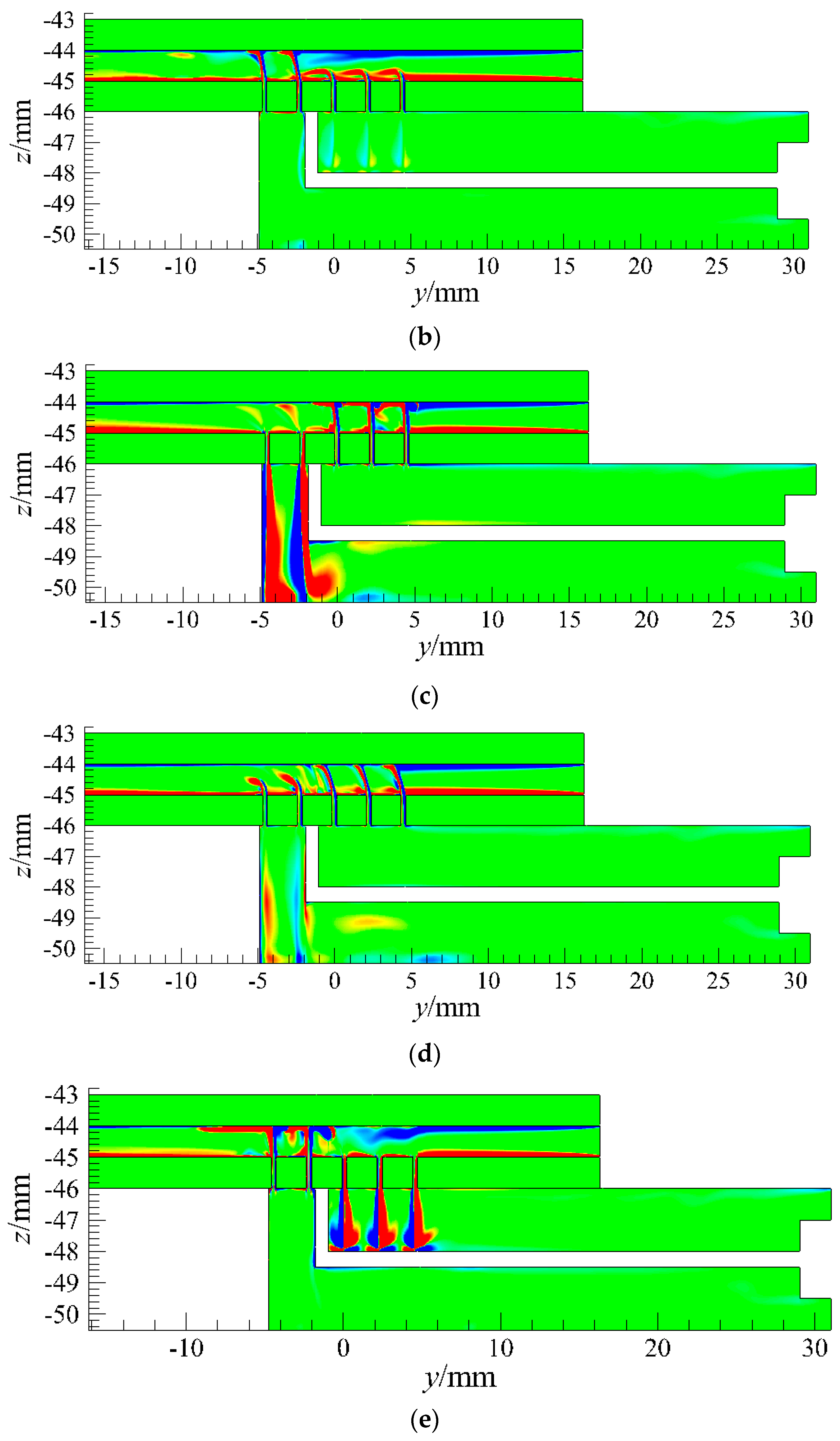






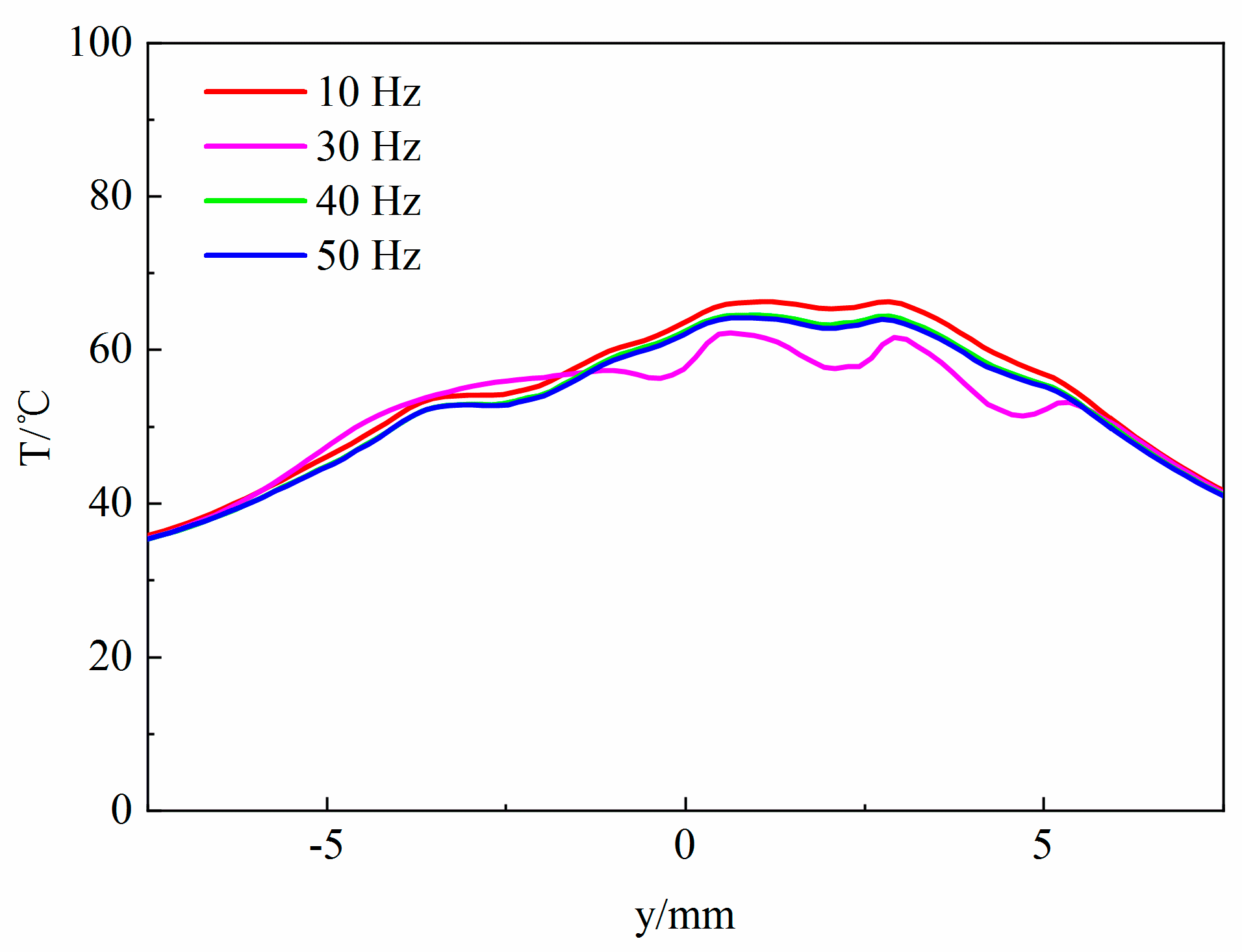
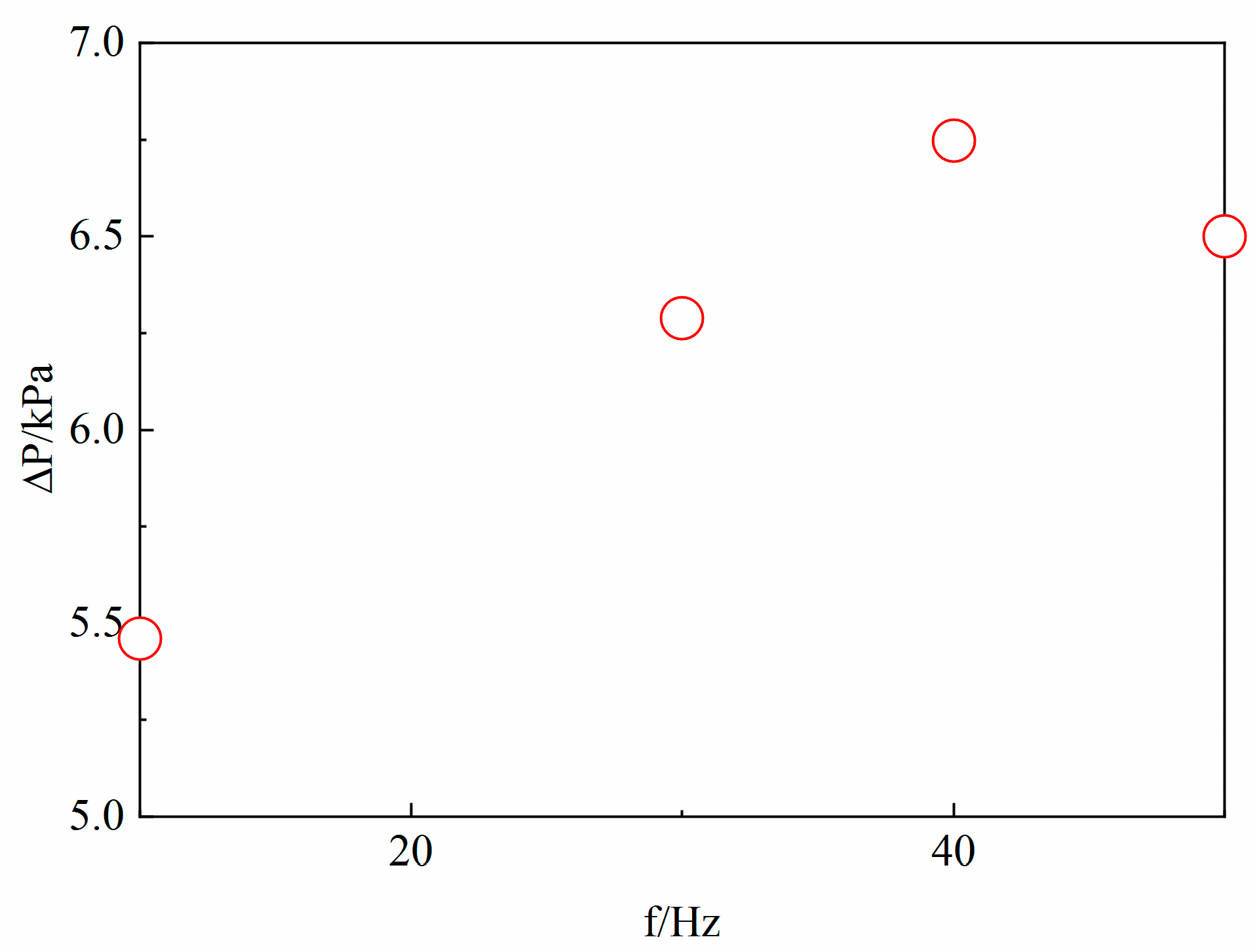
| Grid Number | Pressure Drop (kPa) | Convergence Criteria | Base Temperature (°C) | Convergence Criteria | |
|---|---|---|---|---|---|
| DSJ off | 4,374,057 | 4.35 | 0.685% | 97.82 | 1.082% |
| 8,555,843 | 4.38 | 0.000% | 98.22 | 0.677% | |
| 11,713,823 | 4.38 | - | 98.89 | - | |
| DSJ on(T) | 4,374,057 | 5.93 | 18.767% | 76.31 | 0.883% |
| 8,555,843 | 6.78 | 7.123% | 76.61 | 0.493% | |
| 11,713,823 | 7.30 | - | 76.99 | - |
| Case | Fluid | Solid | Cooling Device | |||||
|---|---|---|---|---|---|---|---|---|
| Thermal | Frictional | Total | Thermal | Total | Thermal | Frictional | Total | |
| DSJ off | 0.01298 | 0.00005 | 0.01303 | 0.00006 | 0.00006 | 0.01304 | 0.00005 | 0.01309 |
| DSJ on (0.75 T) | 0.00380 | 0.00030 | 0.00410 | 0.00004 | 0.00004 | 0.00384 | 0.00030 | 0.00414 |
Publisher’s Note: MDPI stays neutral with regard to jurisdictional claims in published maps and institutional affiliations. |
© 2022 by the authors. Licensee MDPI, Basel, Switzerland. This article is an open access article distributed under the terms and conditions of the Creative Commons Attribution (CC BY) license (https://creativecommons.org/licenses/by/4.0/).
Share and Cite
Kang, Y.; Luo, Z.; Deng, X.; Zhu, Y.; Xia, Z. Dual Synthetic Jet Actuator and Its Applications—Part IV: Analysis of Heat Dissipation and Entropy Generation of Liquid Cooling with Dual Synthetic Jet Actuator. Actuators 2022, 11, 382. https://doi.org/10.3390/act11120382
Kang Y, Luo Z, Deng X, Zhu Y, Xia Z. Dual Synthetic Jet Actuator and Its Applications—Part IV: Analysis of Heat Dissipation and Entropy Generation of Liquid Cooling with Dual Synthetic Jet Actuator. Actuators. 2022; 11(12):382. https://doi.org/10.3390/act11120382
Chicago/Turabian StyleKang, Ying, Zhenbing Luo, Xiong Deng, Yinxin Zhu, and Zhixun Xia. 2022. "Dual Synthetic Jet Actuator and Its Applications—Part IV: Analysis of Heat Dissipation and Entropy Generation of Liquid Cooling with Dual Synthetic Jet Actuator" Actuators 11, no. 12: 382. https://doi.org/10.3390/act11120382
APA StyleKang, Y., Luo, Z., Deng, X., Zhu, Y., & Xia, Z. (2022). Dual Synthetic Jet Actuator and Its Applications—Part IV: Analysis of Heat Dissipation and Entropy Generation of Liquid Cooling with Dual Synthetic Jet Actuator. Actuators, 11(12), 382. https://doi.org/10.3390/act11120382







